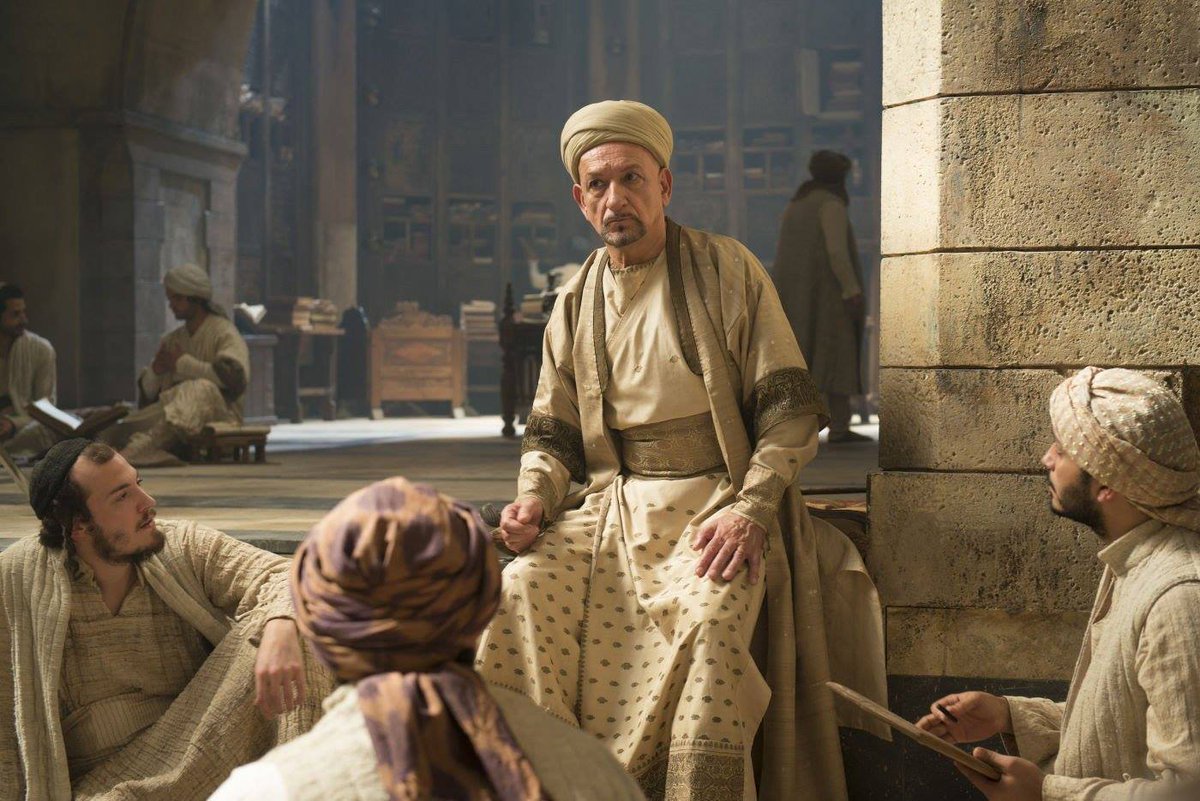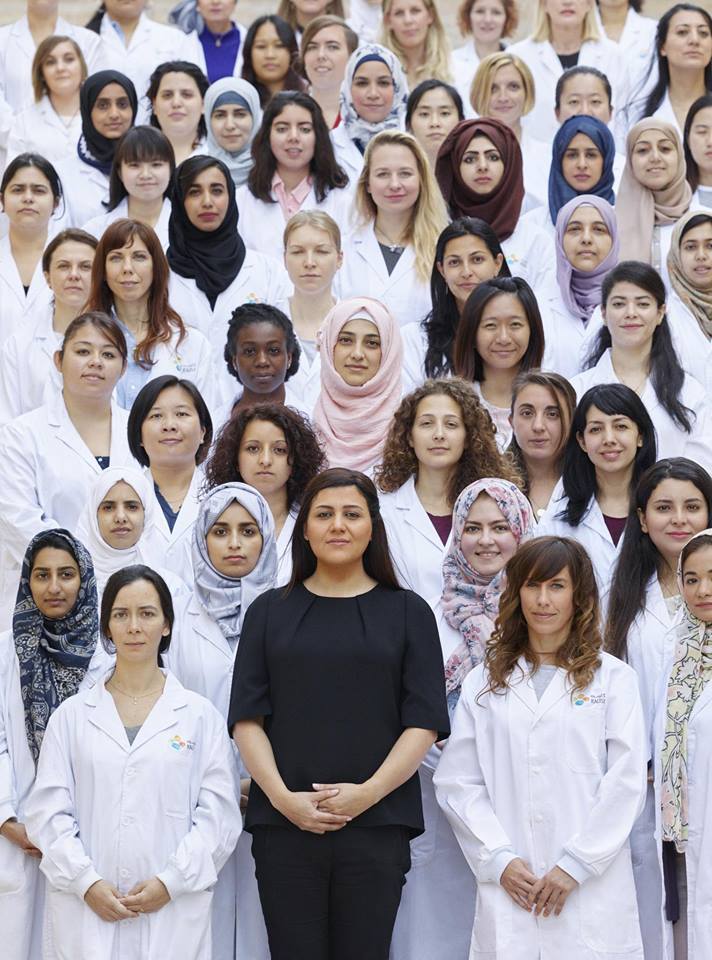How to get URL link on X (Twitter) App

 According to UNESCO, 34-57% of STEM graduates in Arab countries are women – a figure much higher than that seen in universities across the US or Europe
According to UNESCO, 34-57% of STEM graduates in Arab countries are women – a figure much higher than that seen in universities across the US or Europe

 Ibn Firnas built a wooden flying machine and used it to jump from a building. He failed in his 1st attempt, but he didn’t lose his hope, and years later, he made a successful flight. This time, he used eagles feathers and silk for his flying machine.
Ibn Firnas built a wooden flying machine and used it to jump from a building. He failed in his 1st attempt, but he didn’t lose his hope, and years later, he made a successful flight. This time, he used eagles feathers and silk for his flying machine. 
https://twitter.com/IslamScienceNet/status/1363747248505556995Scientists, intellectuals & social scientists expected that the spread of modern science would drive secularisation – that science would be a secularising force. But that simply hasn’t been the case.

 👉They are very low probability events that occur extremely rarely, perhaps only once in the universe’s lifetime.
👉They are very low probability events that occur extremely rarely, perhaps only once in the universe’s lifetime.
 Miracles constitute one of the most contentious issues in the debates of Religion and Science. Miracles are not as fundamental to some religions as to others, but in their direct connection to the more important issue of divine action in the world, they are essential to address.
Miracles constitute one of the most contentious issues in the debates of Religion and Science. Miracles are not as fundamental to some religions as to others, but in their direct connection to the more important issue of divine action in the world, they are essential to address.

 Ibn Sina firmly believed that there are laws of nature which cannot be violated. He believed that all physical phenomena have a known cause – an idea which also characterised his approach to medicine.
Ibn Sina firmly believed that there are laws of nature which cannot be violated. He believed that all physical phenomena have a known cause – an idea which also characterised his approach to medicine.

 This map was part of an 11th-century manuscript copy of al-Khwarizmi’s Kitab surat al-‘ard (Book of a picture of the earth) published in English under the title The Oriental Geography of Ebn Hawqal (1800).
This map was part of an 11th-century manuscript copy of al-Khwarizmi’s Kitab surat al-‘ard (Book of a picture of the earth) published in English under the title The Oriental Geography of Ebn Hawqal (1800).

 Ibn Firnas built a wooden flying machine and used it to jump from a building. He failed in his 1st attempt, but he didn’t lose his hope, and years later, he made a successful flight. This time, he used eagles feathers and silk for his flying machine.
Ibn Firnas built a wooden flying machine and used it to jump from a building. He failed in his 1st attempt, but he didn’t lose his hope, and years later, he made a successful flight. This time, he used eagles feathers and silk for his flying machine. 

 This map was part of an 11th-century manuscript copy of al-Khwarizmi’s Kitab surat al-‘ard (Book of a picture of the earth) published in English under the title The Oriental Geography of Ebn Hawqal (1800).
This map was part of an 11th-century manuscript copy of al-Khwarizmi’s Kitab surat al-‘ard (Book of a picture of the earth) published in English under the title The Oriental Geography of Ebn Hawqal (1800).

 The Madrasa taught many different subjects, including medicine, math, literature, grammar, philosophy & Islamic religious studies. However, the major focus of education was in Islamic law. It became the most prominent and high-ranking center for Islamic studies in all of Baghdad.
The Madrasa taught many different subjects, including medicine, math, literature, grammar, philosophy & Islamic religious studies. However, the major focus of education was in Islamic law. It became the most prominent and high-ranking center for Islamic studies in all of Baghdad. 

 In 1079, Omar Khayyam calculated the length of the year to 365.24219858156 days. That means that he was out by less than the sixth decimal place– fractions of a second – from the figure we have today of 365.242190, derived with the aid of radio telescopes and atomic clocks.
In 1079, Omar Khayyam calculated the length of the year to 365.24219858156 days. That means that he was out by less than the sixth decimal place– fractions of a second – from the figure we have today of 365.242190, derived with the aid of radio telescopes and atomic clocks.

 In 1079, Omar Khayyam calculated the length of the year to 365.24219858156 days. That means that he was out by less than the sixth decimal place– fractions of a second – from the figure we have today of 365.242190, derived with the aid of radio telescopes and atomic clocks.
In 1079, Omar Khayyam calculated the length of the year to 365.24219858156 days. That means that he was out by less than the sixth decimal place– fractions of a second – from the figure we have today of 365.242190, derived with the aid of radio telescopes and atomic clocks.

 This map was part of an 11th-century manuscript copy of al-Khwarizmi’s Kitab surat al-‘ard (Book of a picture of the earth) published in English under the title The Oriental Geography of Ebn Hawqal (1800).
This map was part of an 11th-century manuscript copy of al-Khwarizmi’s Kitab surat al-‘ard (Book of a picture of the earth) published in English under the title The Oriental Geography of Ebn Hawqal (1800).

 Ibn Sina firmly believed that there are laws of nature which cannot be violated. He believed that all physical phenomena have a known cause – an idea which also characterised his approach to medicine.
Ibn Sina firmly believed that there are laws of nature which cannot be violated. He believed that all physical phenomena have a known cause – an idea which also characterised his approach to medicine.

 According to UNESCO, 34-57% of STEM graduates in Arab countries are women – a figure much higher than that seen in universities across the US or Europe
According to UNESCO, 34-57% of STEM graduates in Arab countries are women – a figure much higher than that seen in universities across the US or Europe

 Islamic hospitals were one part of a larger network of charity that included mosques, public kitchens, charitable hotels, and so many other things that allow these hospitals to focus on working with patients.
Islamic hospitals were one part of a larger network of charity that included mosques, public kitchens, charitable hotels, and so many other things that allow these hospitals to focus on working with patients.
